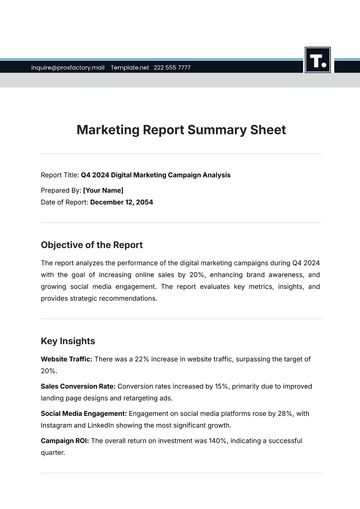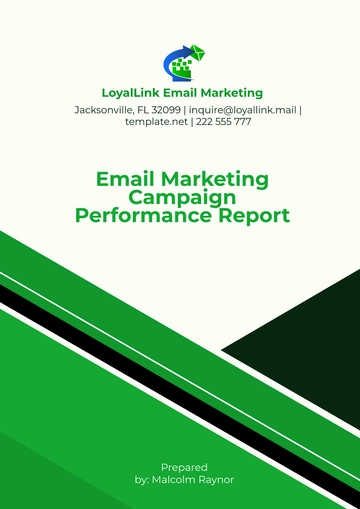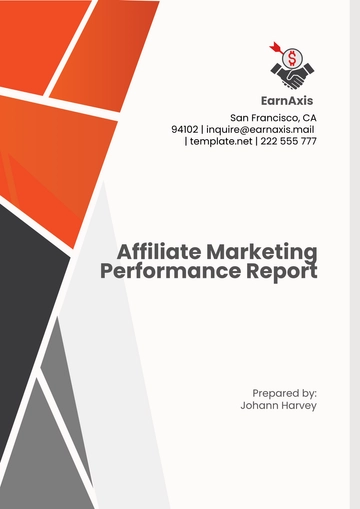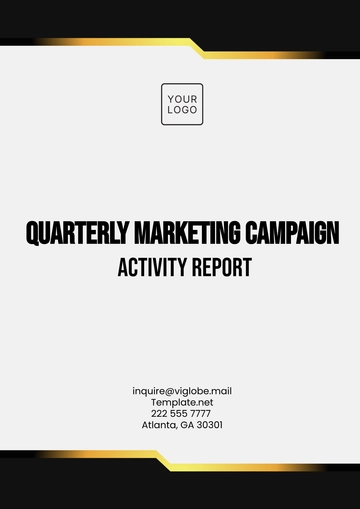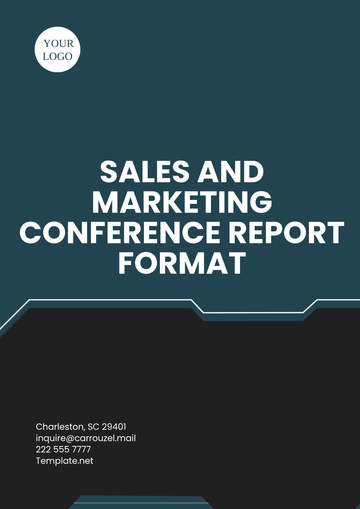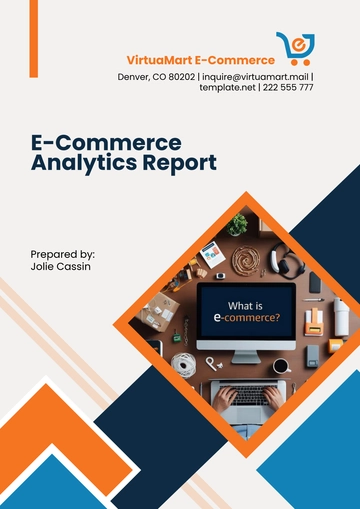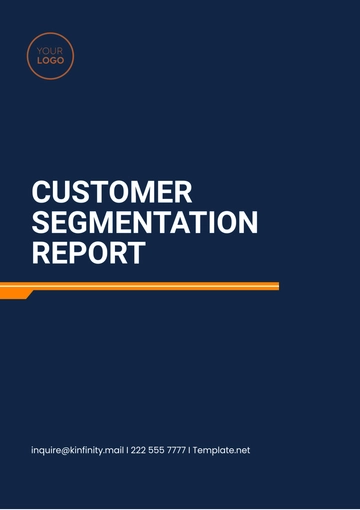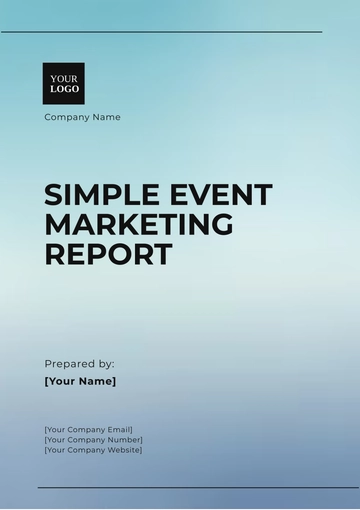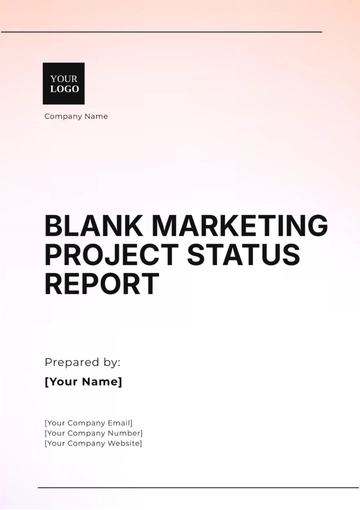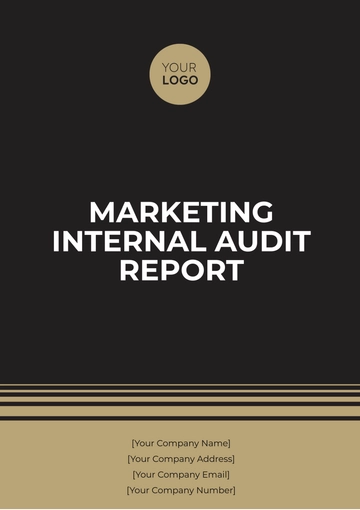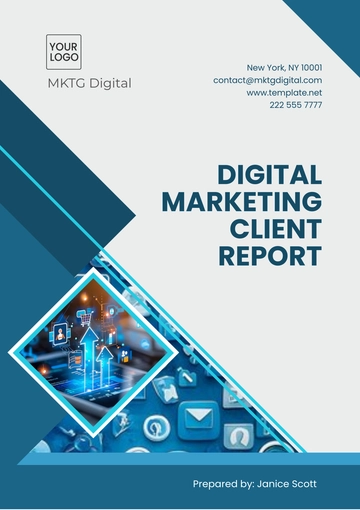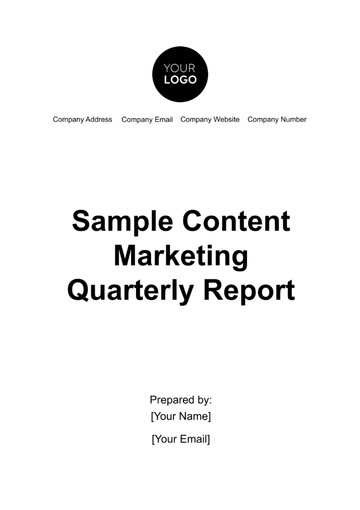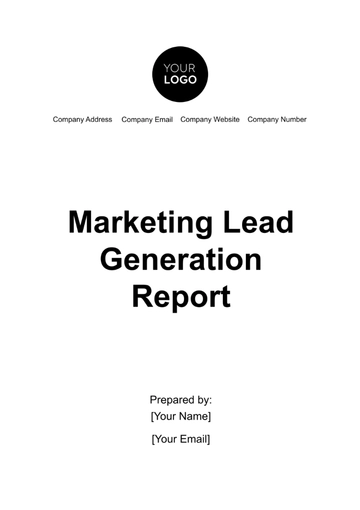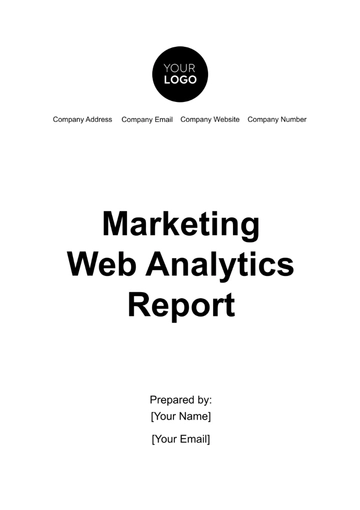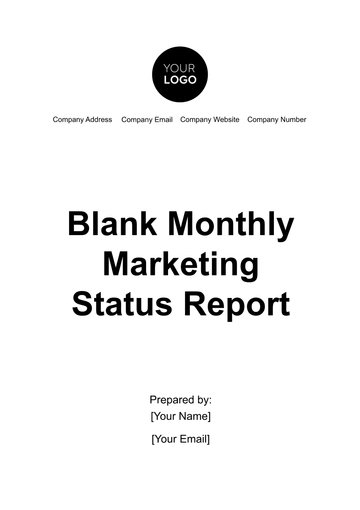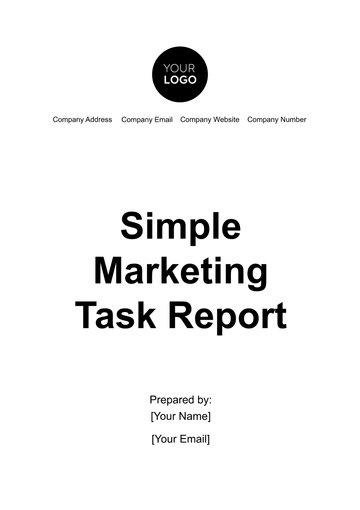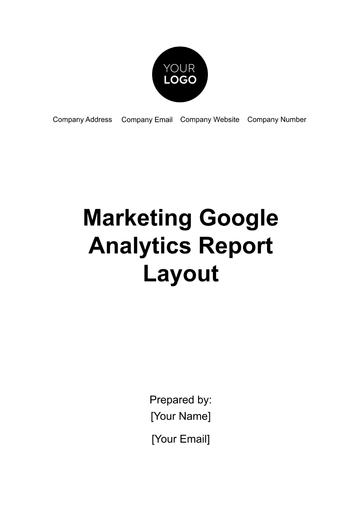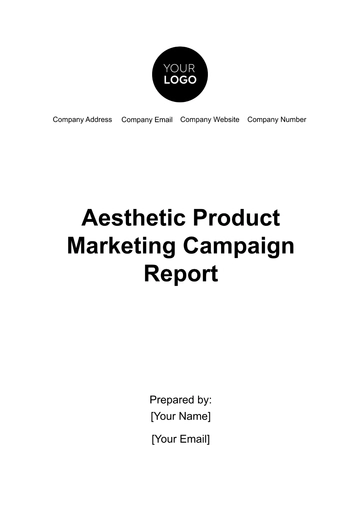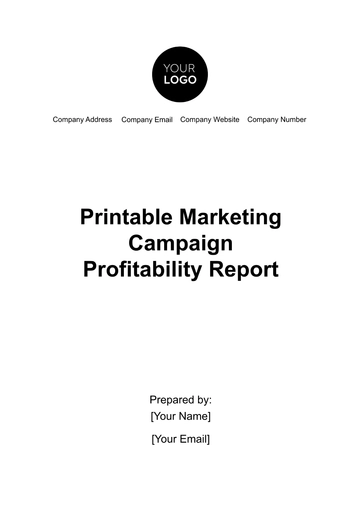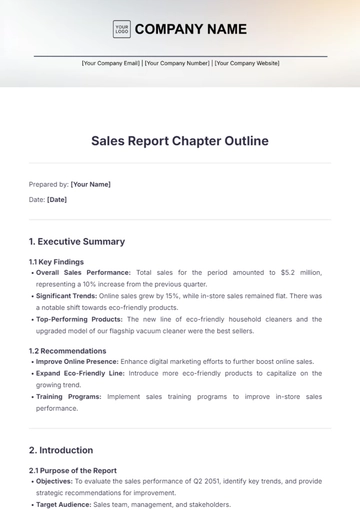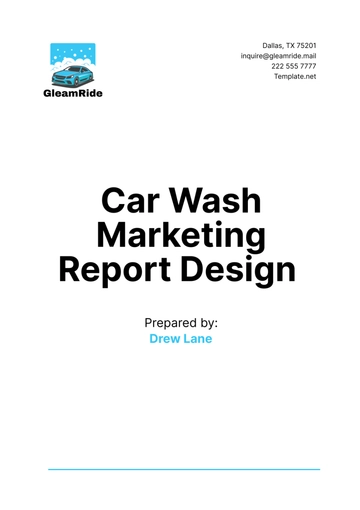Free Marketing Year-end Marketing Report
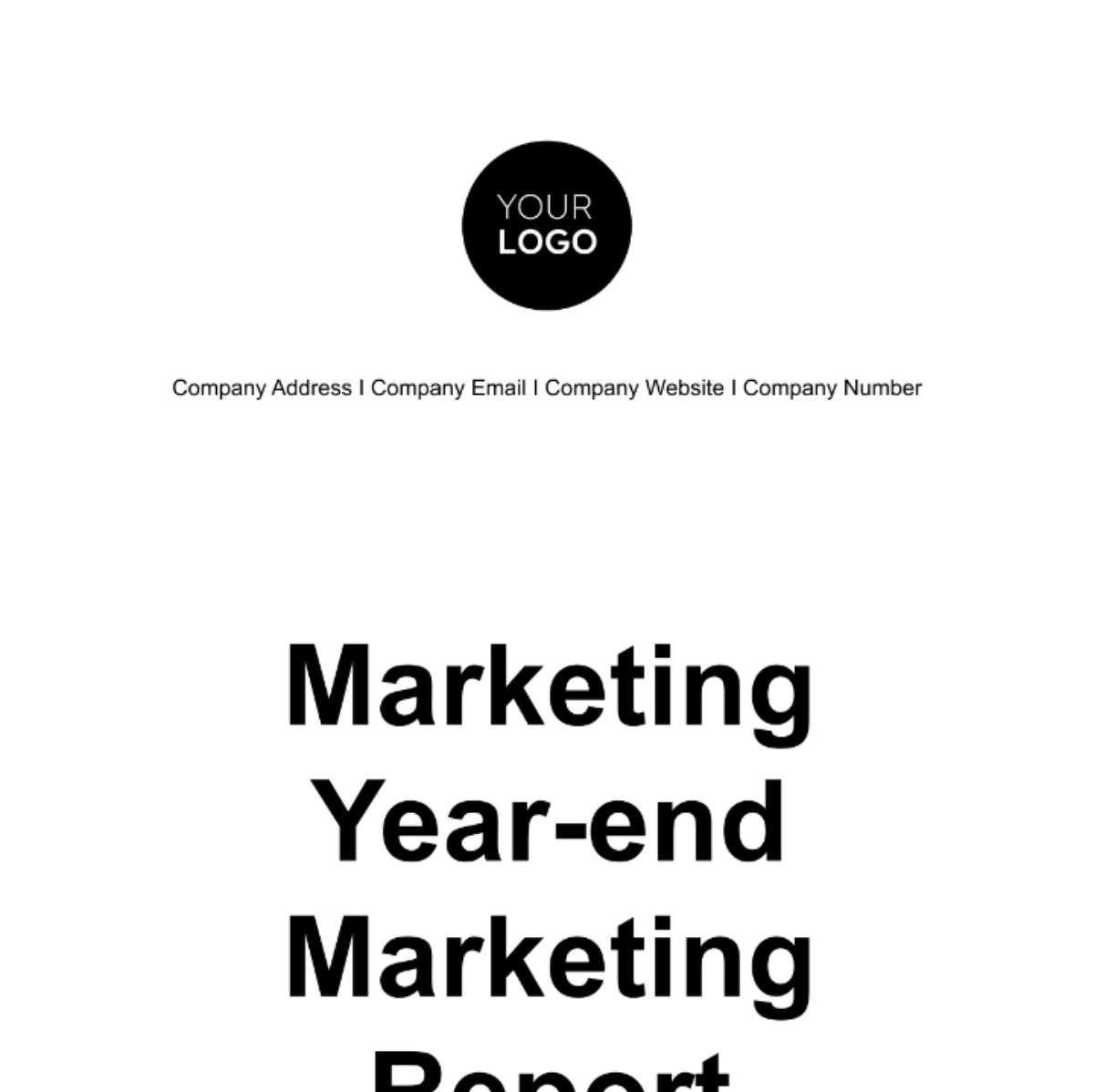
Executive Summary
The year [Year] has been a transformative and eventful one for [Your Company Name] as we navigated through dynamic market trends and evolving consumer behaviors. This Executive Summary provides a high-level overview of our marketing performance, focusing on key achievements and challenges.
Key Achievements:
Revenue Growth: In [Year], we achieved a remarkable [00]% growth in our total revenue, surpassing our annual target. This was primarily driven by successful marketing campaigns and strategic initiatives.
Market Expansion: We successfully expanded into two new international markets, leveraging data-driven market research and localized marketing strategies.
Digital Dominance: Our digital marketing efforts saw exceptional results, with a [00]% increase in online sales. Social media engagement also spiked, with a 30% growth in followers.
Customer Loyalty: A customer loyalty program launched early in the year resulted in a [00]% increase in repeat purchases and overall customer satisfaction.
Key Challenges:
Market Competition: The market became more competitive in [Year], leading to increased advertising costs and a need for more innovative strategies.
Supply Chain Disruptions: Global supply chain disruptions affected our product availability, resulting in customer complaints and delayed orders.
Privacy Regulations: The evolving privacy regulations necessitated a reevaluation of our data collection and use practices.
In summary, [Year] has been a year of substantial growth and adaptation for [Your Company Name]. While we achieved remarkable success, we also faced challenges typical of a dynamic marketplace. Our marketing strategies played a pivotal role in our successes, and the challenges have provided valuable lessons for the future.
Marketing Strategy
A. Objective
Our marketing strategy in [Year] was designed to achieve the following key objectives:
Revenue Growth: To achieve a minimum of [00]% growth in total revenue by expanding our customer base and increasing sales.
Market Expansion: To successfully enter two new international markets and establish a strong market presence.
Digital Dominance: To strengthen our online presence, boost e-commerce sales, and enhance engagement across our social media platforms.
Customer Loyalty: To improve customer retention and satisfaction by launching a customer loyalty program.
B. Target Audience
Our target audience for [Year] was primarily:
Age Group: [00]-[00] years, representing the core demographic interested in our products.
Geographic Segmentation: Our main focus was on urban areas in the United States, Europe, and Asia, as well as urban and semi-urban areas in our new international markets.
Interests: Tech-savvy individuals interested in innovative solutions and eco-conscious products.
Marketing Channels
Our marketing strategy relied on a multi-channel approach, utilizing the following primary channels:
Digital Marketing: Leveraging social media advertising, email marketing, and pay-per-click (PPC) campaigns to reach a global audience.
Content Marketing: Creating blog posts, whitepapers, and video content to educate and engage our target audience.
Social Media: Active presence on platforms such as Facebook, Instagram, and LinkedIn to connect with customers and share updates.
Email Marketing: Consistent email campaigns to nurture leads and communicate with existing customers.
Search Engine Optimization (SEO): Implementing on-page and off-page SEO strategies to improve organic search rankings.
Paid Advertising: Utilizing Google Ads and sponsored posts on social media platforms to boost visibility.
Year-Long Marketing Campaigns
A. Campaign 1: [Campaign Name]
Objectives:
The primary goal of Campaign 1, known as "[Campaign Name]," was to boost brand awareness and engage with our target audience. Specific objectives included:
Increasing website traffic by [00]%.
Generating [00,000] new leads.
Improving brand recognition by at least [00]%.
Results:
Website Traffic: We successfully achieved a [00]% increase in website traffic during the campaign, surpassing our target.
Lead Generation: The campaign generated an impressive [00,000] new leads, indicating its effectiveness in expanding our customer base.
Brand Recognition: Brand recognition saw a [00]% increase, indicating that our target audience became more familiar with our brand.
Challenges and Improvements:
Content Relevance: Maintaining content relevance was a challenge, and we learned the importance of regularly updating content to meet evolving customer needs.
Ad Spend: The campaign incurred higher ad spend due to increased competition. We plan to optimize ad spend in the next campaign.
B. Campaign 2: [Campaign Name]
Objectives:
Campaign 2, known as "[Campaign Name]," aimed to promote a new product line and boost sales. Specific objectives included:
Achieving a [00]% increase in sales of the new product line.
Obtaining a [00]% increase in social media engagement.
Results:
Sales Increase: The campaign successfully led to a [00]% increase in sales for the new product line, exceeding our expectations.
Social Media Engagement: Social media engagement grew by [00]%, indicating that the campaign effectively engaged our audience.
Challenges and Improvements:
Inventory Management: Keeping up with the high demand for the new product line presented inventory challenges, which we are addressing for future launches.
Targeting: The initial targeting could be refined for even better results in the next product launch campaign.
Content Marketing
A. Blog Posts
Number of Blog Posts: Throughout [Year], we published a total of [00] blog posts, providing valuable insights and information to our audience.
Performance: Our blog posts generated an average of [0,000] pageviews each, and the click-through rate (CTR) on call-to-action (CTA) buttons within the posts was [00]%.
B. White Papers and Ebooks
Production: We created three whitepapers and two ebooks in [Year], which served as valuable lead magnets.
Impact: These resources collectively generated [0,000] new leads, with an impressive conversion rate of [00]%.
C. Video Marketing
Video Content: We produced [00] videos in [Year], including product demonstrations, tutorials, and customer testimonials.
Engagement: Our videos collectively received [000,000] views on various platforms, demonstrating their popularity among our audience.
Social Media Marketing
A. Social Media Metrics
Our social media marketing efforts in [Year] focused on engaging with our audience and building a strong online presence. The following metrics demonstrate our performance:
Followers: Our social media accounts saw substantial growth. We started the year with [00,000] followers and ended with [00,000], indicating a [00]% increase.
Likes and Shares: Our posts received an average of [0,000] likes and [0,000] shares, highlighting the engagement of our audience.
Comments: We encouraged dialogue with our audience, resulting in an average of [000] comments per post.
B. Best Performing Posts
Several posts stood out due to their exceptional engagement. Here are a few notable examples:
Post 1: A product launch post received [00,000] likes, [0,000] shares, and [000] comments, generating significant buzz around the new product.
Post 2: A customer testimonial video garnered [00,000] views and [0,000] likes, showcasing the positive impact of our products.
Post 3: A user-generated content contest led to [0,000] submissions, [0,000] likes, and [000] shares, demonstrating our audience's enthusiasm.
C. Paid Advertising
In [Year], we allocated a portion of our marketing budget to paid advertising on social media platforms. Here's an overview of our paid advertising efforts:
Ad Campaigns: We ran ten distinct ad campaigns throughout the year, each tailored to specific marketing goals.
Budget Allocation: A total budget of $[000,000] was allocated to paid advertising, distributed among the various campaigns based on objectives and audience targeting.
ROI: The return on investment (ROI) for our social media advertising campaigns averaged at [000]%, highlighting their effectiveness in generating revenue.
Email Marketing
A. Email Campaigns
Our email marketing strategy focused on nurturing leads, communicating with customers, and delivering valuable content. In [Year], we executed the following email campaigns:
Newsletter Campaigns: We sent out a monthly newsletter to our subscribers, keeping them informed about product updates, industry news, and special offers.
Product Announcements: We launched ten product announcement emails, resulting in a [00]% increase in sales for the featured products.
Promotional Campaigns: On special occasions, such as holidays, we sent promotional emails offering discounts and deals, resulting in a [00]% boost in sales during these periods.
B. List Growth
Our efforts in list growth led to a substantial increase in our subscriber base. We began the year with [00,000] subscribers and ended with [00,000], indicating a [000]% growth in our email list.
C. Personalization
In [Year], we focused on personalizing our email campaigns to enhance customer engagement. We implemented dynamic content and personalized subject lines, resulting in a [00]% increase in email open rates and a 10% rise in click-through rates.
Search Engine Optimization (SEO)
A. Keyword Rankings
Our SEO efforts in [Year] were focused on improving our visibility in search engines. Here is an overview of our keyword rankings:
Top Keywords: We targeted ten high-value keywords, and by the end of the year, we achieved top page rankings for eight of them, resulting in increased organic traffic.
Organic Traffic: Organic search traffic increased by [00]% during the year. We began with [00,000] organic visitors per month and ended with [00,000].
B. On-Page SEO
Our on-page SEO strategies were instrumental in boosting our website's search engine visibility. Key highlights include:
Content Optimization: We optimized [000]% of our website content, including meta tags, headings, and keyword usage.
Mobile Optimization: Our website was fully mobile-responsive, which positively impacted our search rankings.
Site Speed: We improved our website's loading speed by [00]%, resulting in a better user experience and improved search rankings.
Paid Advertising
A. Ad Campaigns
Paid advertising played a significant role in our marketing strategy for [Year]. Here is an overview of our paid advertising campaigns:
Number of Ad Campaigns: We executed a total of ten distinct ad campaigns across various platforms, each with specific goals and target audiences.
Budget Allocation: Our total advertising budget for the year was $[000,000], and it was allocated based on the campaign's objectives and expected returns.
ROI: The return on investment (ROI) for our paid advertising campaigns averaged at [000]%, demonstrating the effectiveness of our ad spend.
Ad Performance
Key metrics from our paid advertising campaigns:
Click-Through Rate (CTR): The average CTR across our campaigns was [0]%, indicating a strong engagement with our ads.
Conversion Rate: Our ads led to a conversion rate of [00]%, contributing to increased sales and lead generation.
Cost-Per-Click (CPC): The average CPC was $[0.00], which was well within our budget expectations.
A. Ad Platforms
We used various advertising platforms, including:
Google Ads: We ran search and display campaigns on Google Ads, which resulted in a [00]% increase in website traffic.
Social Media Advertising: Social media platforms, particularly Facebook and Instagram, contributed to a [00]% increase in brand recognition and social media engagement.
B. Ad Creatives
We employed a variety of ad creatives, including image ads, video ads, and interactive ads. Video ads, in particular, performed exceptionally well, with a [00]% higher CTR compared to image ads.
Conclusion
In closing, the year [Year] has been a remarkable journey for [Your Company Name] in the realm of marketing. As we reflect on the comprehensive data and insights presented in this report, several key takeaways and considerations emerge.
Acknowledgment of Achievements
We are proud to acknowledge the significant achievements of the year:
Revenue Growth: A substantial [00]% increase in total revenue reflects our effective marketing strategies, enabling us to outperform our annual targets.
Market Expansion: Our successful entry into two new international markets has widened our global footprint and allowed us to explore new opportunities.
Digital Dominance: Our digital marketing initiatives, including social media and online sales, have thrived with substantial increases in engagement and online revenue.
Customer Loyalty: The launch of our customer loyalty program has not only enhanced customer satisfaction but also fostered stronger relationships with our valued clients.
- 100% Customizable, free editor
- Access 1 Million+ Templates, photo’s & graphics
- Download or share as a template
- Click and replace photos, graphics, text, backgrounds
- Resize, crop, AI write & more
- Access advanced editor
Unlock the power of data-driven decisions with Template.net's Year-end Marketing Report Template. Crafted for precision, it's fully editable and customizable to your brand's unique needs. Seamlessly navigate through insights and metrics using our Ai Editor Tool, ensuring a polished and professional report that reflects your company's excellence. Elevate your year-end review process effortlessly.
You may also like
- Sales Report
- Daily Report
- Project Report
- Business Report
- Weekly Report
- Incident Report
- Annual Report
- Report Layout
- Report Design
- Progress Report
- Marketing Report
- Company Report
- Monthly Report
- Audit Report
- Status Report
- School Report
- Reports Hr
- Management Report
- Project Status Report
- Handover Report
- Health And Safety Report
- Restaurant Report
- Construction Report
- Research Report
- Evaluation Report
- Investigation Report
- Employee Report
- Advertising Report
- Weekly Status Report
- Project Management Report
- Finance Report
- Service Report
- Technical Report
- Meeting Report
- Quarterly Report
- Inspection Report
- Medical Report
- Test Report
- Summary Report
- Inventory Report
- Valuation Report
- Operations Report
- Payroll Report
- Training Report
- Job Report
- Case Report
- Performance Report
- Board Report
- Internal Audit Report
- Student Report
- Monthly Management Report
- Small Business Report
- Accident Report
- Call Center Report
- Activity Report
- IT and Software Report
- Internship Report
- Visit Report
- Product Report
- Book Report
- Property Report
- Recruitment Report
- University Report
- Event Report
- SEO Report
- Conference Report
- Narrative Report
- Nursing Home Report
- Preschool Report
- Call Report
- Customer Report
- Employee Incident Report
- Accomplishment Report
- Social Media Report
- Work From Home Report
- Security Report
- Damage Report
- Quality Report
- Internal Report
- Nurse Report
- Real Estate Report
- Hotel Report
- Equipment Report
- Credit Report
- Field Report
- Non Profit Report
- Maintenance Report
- News Report
- Survey Report
- Executive Report
- Law Firm Report
- Advertising Agency Report
- Interior Design Report
- Travel Agency Report
- Stock Report
- Salon Report
- Bug Report
- Workplace Report
- Action Report
- Investor Report
- Cleaning Services Report
- Consulting Report
- Freelancer Report
- Site Visit Report
- Trip Report
- Classroom Observation Report
- Vehicle Report
- Final Report
- Software Report
